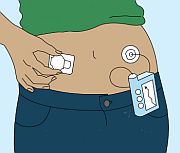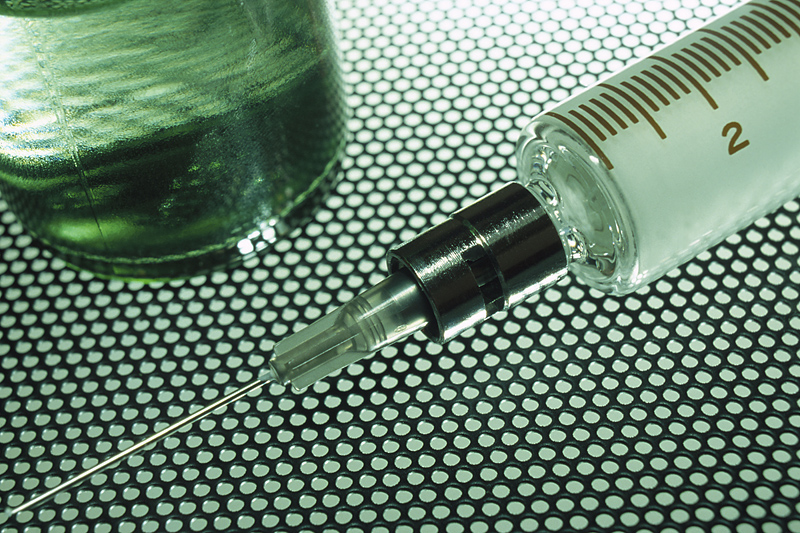
THURSDAY, Sept. 17, 2015 (HealthDay News) — The latest trial of an artificial pancreas system offers good news for people with type 1 diabetes — the system lowered blood sugar levels without increasing the risk of dangerously low blood sugar (hypoglycemia), a new British study says.
The testing, done at home by both adults and children, proved the system better than today’s standard care for managing diabetes, the researchers found.
“This bigger outpatient, real-world trial shows that this potentially transformative therapy works for everyone. You can use it in the real world. And, it’s safe. The number one thing is that it’s safe,” said Aaron Kowalski, vice president of research for JDRF (formerly the Juvenile Diabetes Research Foundation). Kowalski wasn’t directly involved in the research. However, JDRF has provided funding for this system, as well as other artificial pancreas systems, in development.
An artificial pancreas combines existing diabetes technology — insulin pumps and continuous glucose monitors — with a sophisticated computer algorithm that tells these devices what to do when blood sugar levels are rising or falling.
Some artificial pancreas systems only deliver insulin, and others can administer both insulin and another hormone called glucagon. The artificial pancreas system used in the current trial only delivers insulin.
The system computes and administers insulin doses according to glucose levels detected by a continuous glucose monitor sensor, according to background information in the study.
However, it isn’t fully automated (though some other systems in development are). People with type 1 diabetes still need to calculate how many carbohydrates are in the food they’re eating. And, they must input that information into the software program, according to the study’s senior author, Dr. Roman Hovorka, director of research at the University of Cambridge Metabolic Research Laboratories in the United Kingdom.
An effective artificial pancreas has the potential to vastly improve the lives of people with type 1 diabetes, an autoimmune disease in which the body’s immune system mistakenly attacks and destroys insulin-producing beta cells in the pancreas.
Insulin is a hormone that helps usher sugar (glucose) from food into the cells of the body and brain to be used as fuel. People with type 1 must replace insulin through injections or through a tiny catheter attached to an insulin pump. However, figuring out exactly how much insulin to give is no easy task. Either too much or too little insulin can have dangerous, even deadly, consequences.
The hope is that an artificial pancreas will eventually be able to closely mimic the way the human pancreas releases insulin in response to food or stress.
“These systems are always a step ahead of the users. They lower the burden of diabetes. You get fewer alarms and fewer notifications from your devices that you’re doing poorly because the system is doing it for you,” Kowalski said.
The current study included 58 people with type 1 diabetes. There were 33 adults who used the system day and night, and 25 children who used the system only at night, the study said.
All of the participants used the device at home for 12 weeks, according to the study. And, in another 12-week period, they used the same continuous glucose monitor and insulin pump to manage their diabetes, but without the artificial pancreas program to guide the management decisions. This was considered “control” therapy, and such therapy is currently considered “best in class care,” according to Kowalski.
Hovorka said, “We showed substantial benefits of the artificial pancreas when used over a three-month period, and its integration into the normal daily lives of people with type 1 diabetes and their families.”
And, he added, “We observed improved glucose control, reduced mean glucose and increased time when glucose was in the target range, as well as reduced burden of hypoglycemia when compared to the best currently available sensor-augmented insulin pump therapy.”
Findings from the study were scheduled to be presented Thursday at the European Association for the Study of Diabetes (EASD) annual meeting in Stockholm, and were published Sept. 17 in the New England Journal of Medicine to coincide with the presentation.
Hovorka said his research group is currently planning on testing their artificial pancreas system in a longer trial — up to a year in the United Kingdom and in the United States. They’re also planning a trial in people with newly diagnosed type 1 diabetes.
And, he said that they’ll be working to try to integrate devices to minimize the size and weight of the final product.
“This [study] is a stepping stone for making the system widely available,” said Hovorka.
Hovorka’s artificial pancreas system is only one of a number being developed. Some are being developed by academic researchers like Hovorka, others are being designed by diabetes-care companies.
The first artificial pancreas-like system was approved in 2013. It shuts off insulin delivery when blood sugar levels are dropping too fast. Kowalski said it’s possible that in the next two to three years, there will be a more automated artificial pancreas system on the market in the United States.
Although there’s no definitive information available about what such a system might cost, Kowalski said that it’s likely to be similar to the cost of a continuous glucose monitor sensor-augmented pump today. And, “given a similar price and better outcomes,” Kowalski said he’s cautiously optimistic that the artificial pancreas systems will be covered — at least in part — by health insurance companies.
More information
Learn more about artificial pancreas systems from the U.S. Food and Drug Administration.
Copyright © 2025 HealthDay. All rights reserved.

